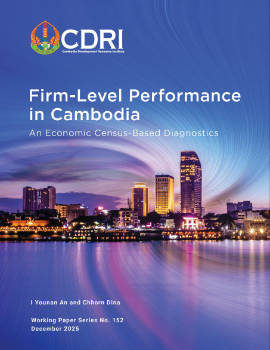
Links between Employment and Poverty in Cambodia
Keyword: Labour market structure, employment and poverty, sectoral productivity, gender employment gap, education and land access
Abstract/Summary
This paper explores labour market structure and employment links to poverty in Cambodia. Employment elasticity of growth, labour productivity and real wage growth are the main indicators of the labour market situation, while probit models estimate the connection between household employment and poverty likelihood. The paper combines macro and micro data to perform a descriptive analysis. For probit estimation, it uses the Cambodia Socio-Economic Survey (CSES) 2007-11. The results show that agriculture, albeit with a slow growth rate, absorbed a big part of the labour force, while the sector’s growth was driven mainly by productivity increases, as was that of services. Industry grew rapidly, but its capacity to employ labour was relatively small. The growth rate of industry depended on employment levels within the sector rather than on increases in productivity. Note that female workers had less chance of being employed than male workers: a 1 percent rise in GDP would increase the demand for female labour by 0.65 percent and the demand for male labour by 0.71 percent. The labour markets in industry and services were very competitive: growth in real wages rose along with increases in labour productivity, implying that expected real wages would increase with higher labour productivity and vice versa. In this case, firms seem to have benefited from hiring more labour to expand their outputs as long as wages remained manageable. This was not the case for agriculture, where changes in real wages and productivity reflect the possibility of labour being discarded. Employment creation in services is found to help the poor to have a better chance of overcoming poverty, but this is not the case in agriculture and industry. From the empirical results, households employed in agriculture have a higher chance of being poor than those employed in industry. Factors that help workers to avoid poverty are land and education. The study suggests that macro policy should seek to make farmland more accessible to farmers, and that investment in education should be increased so that every citizen at least finishes primary and lower secondary education, to increase workers’ capabilities and productivity.



